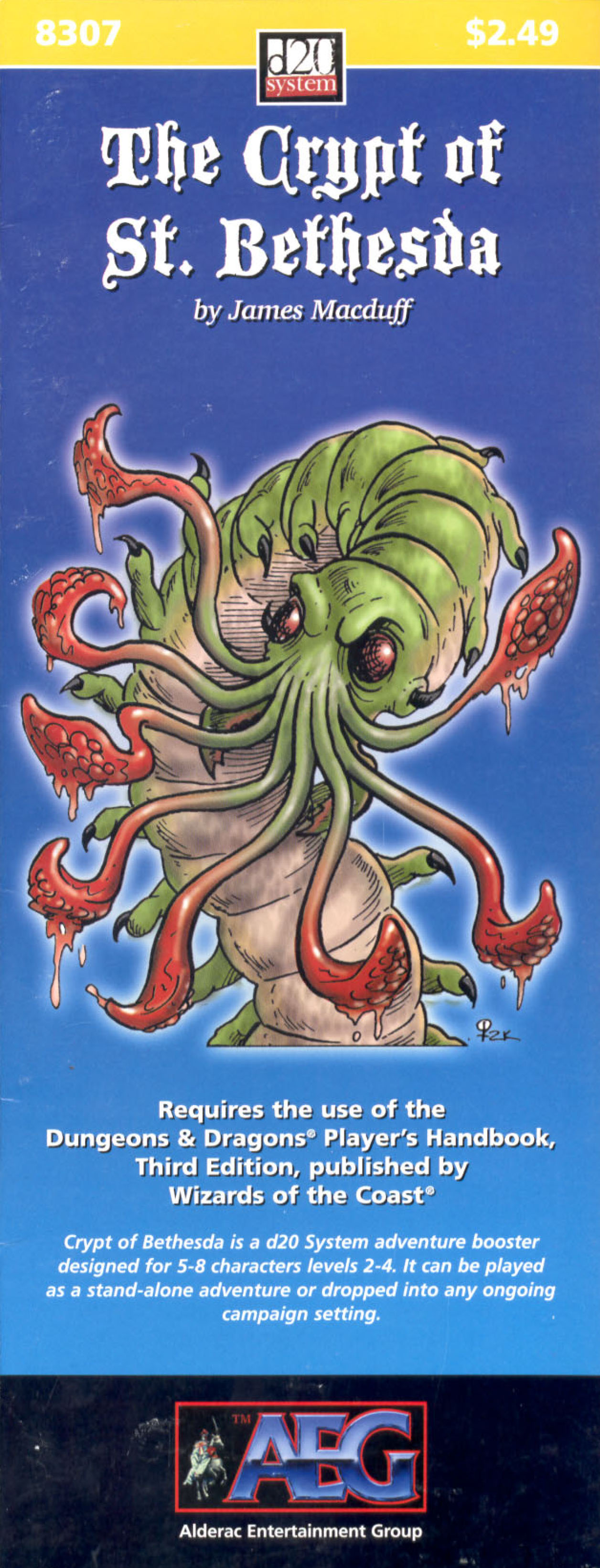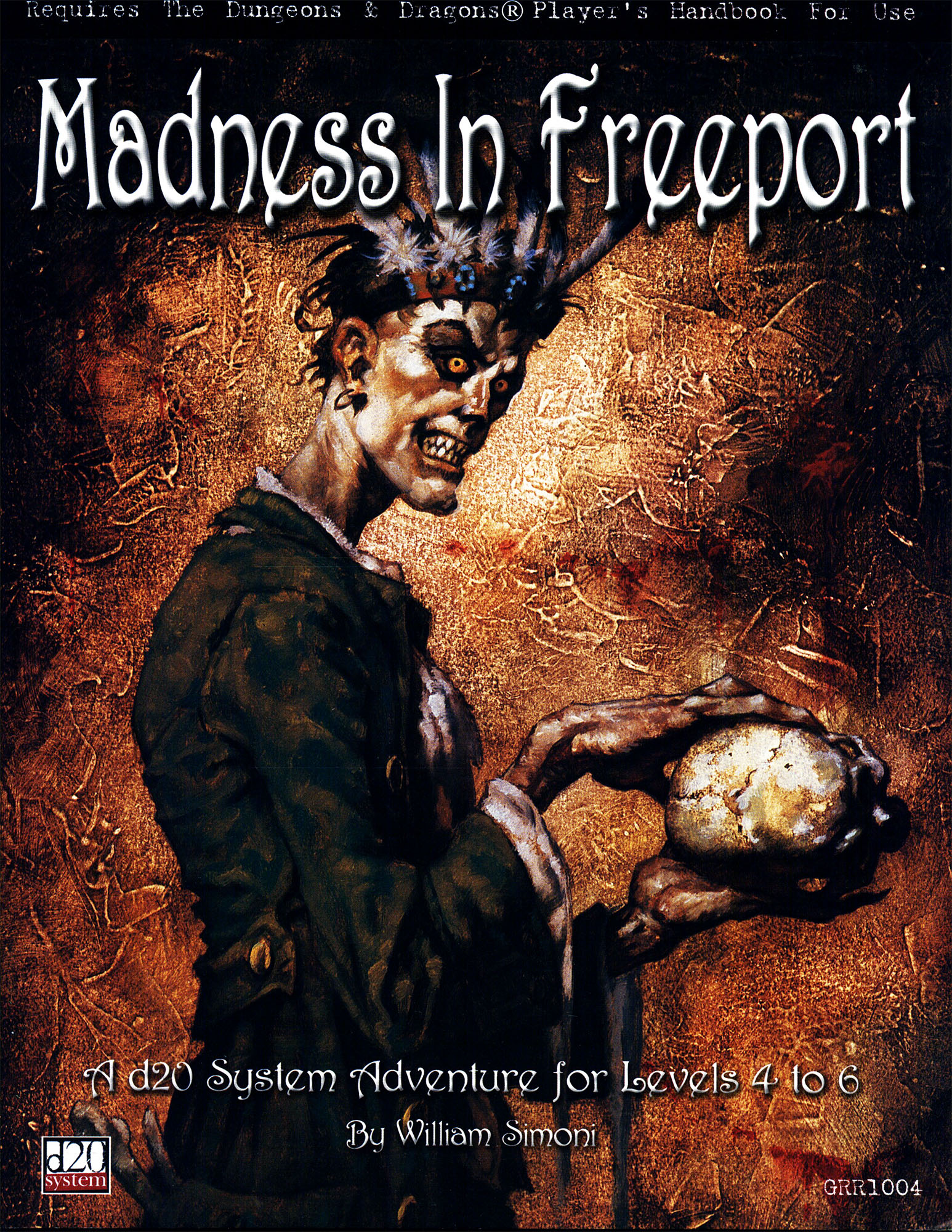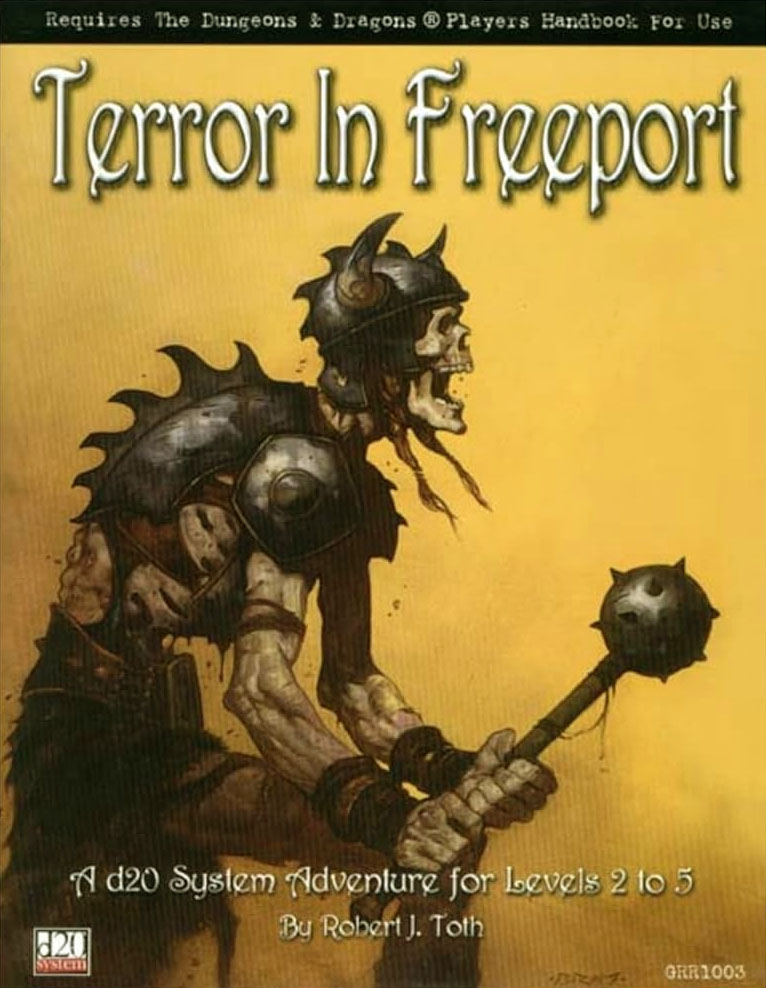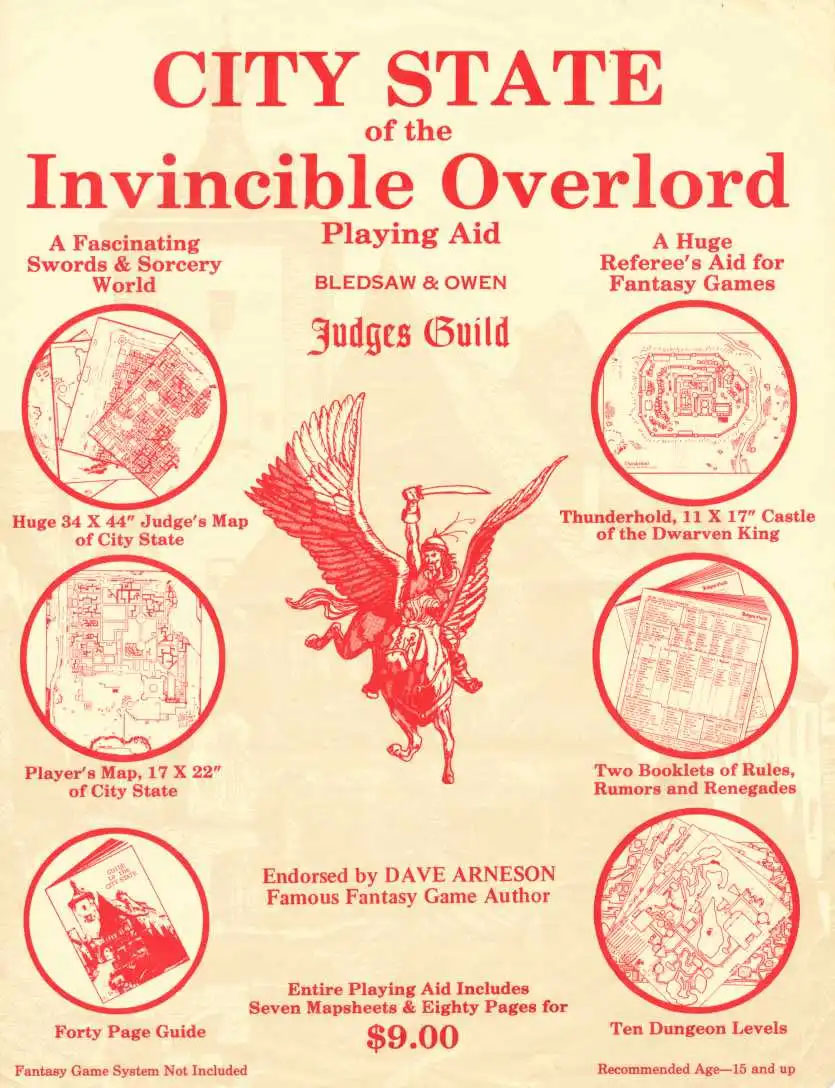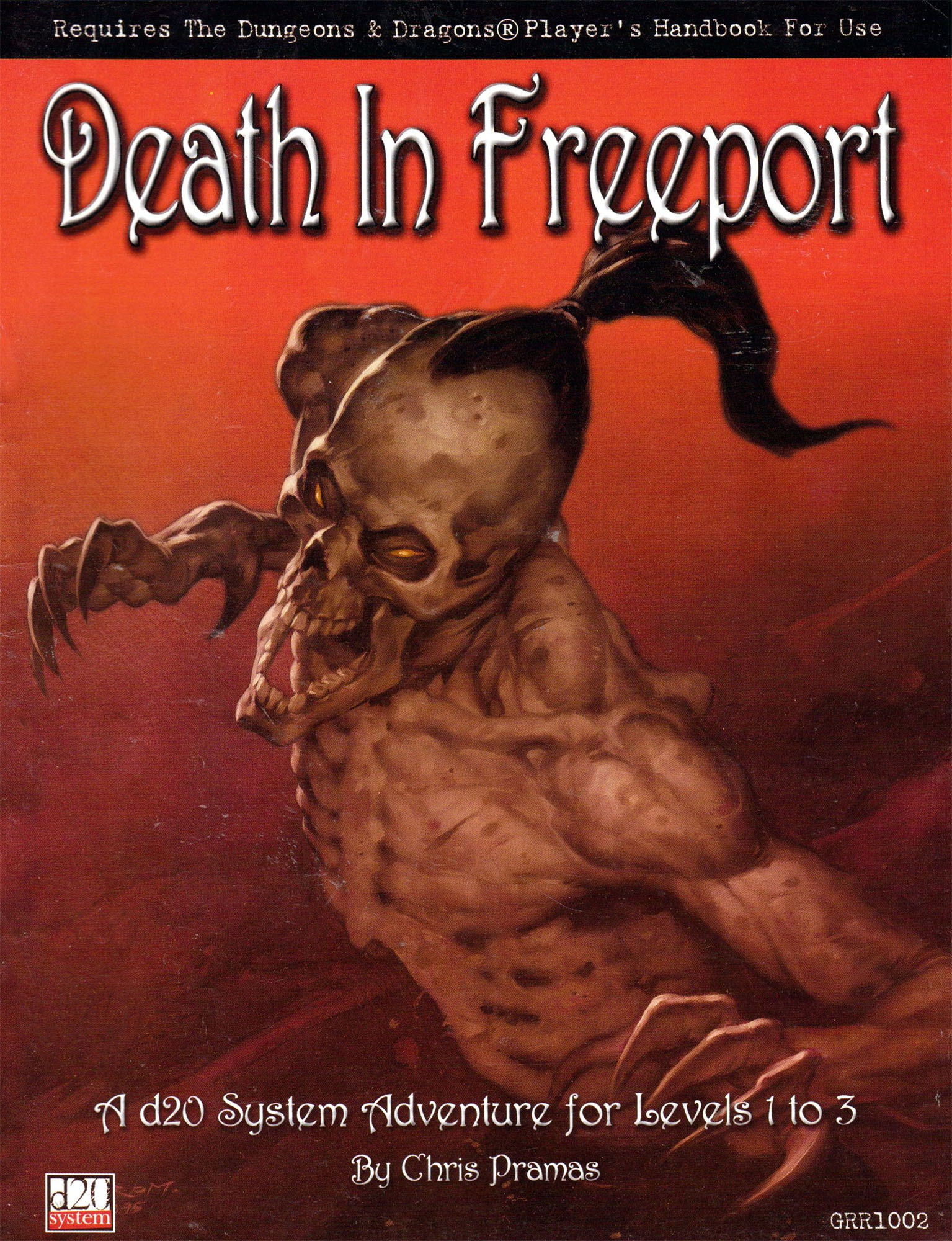
One of the inaugural products of the D20 license, Death in Freeport is possessed of some wonderful strengths… and some disappointing weaknesses.
Review Originally Published February 12th, 2001
When the 3rd edition of D&D was released in August 2000 at Gen Con, everyone in attendance knew that the rules of the game had changed: Not just because the line for the Player’s Handbook stretched around the Castle and out of sight (that was expected). Not just because it was the steadiest, loudest buzz of the con (that was expected). Not just because the words “D&D” dominated every program and announcement (that, too, was expected).
No, people knew the rules had changed because Atlas Games had released Three Days to Kill (reviewed here) and Green Ronin Publishing had released Death in Freeport — the first two modules produced under the D20 System Trademark License.
As an inaugural product of sorts, Death in Freeport has its share of rough edges. But it’s not distinguished only because of Chris Pramas’ good sense of timing. It also contains some laudatory gaming material which you might want to take a couple of minutes to check out.
PLOT
Warning: This review will contain spoilers for Death in Freeport. Players who may end up playing in this module are encouraged to stop reading now. Proceed at your own risk.
Death in Freeport takes place in the City of Freeport, an old pirate den which has since become a bustling island metropolis. The first six pages of this module are, in fact, dedicated to describing Freeport’s history and background – sketching in the broad outlines of an interesting gaming venue which can be thrown down along the coastline of any traditional D&D fantasy world.
The story itself involves a priest named Lucius. Six years ago, Lucius’ body was taken over by a mysterious power. Four years later, Lucius awoke to find his body returned to him – in his absence though, the power had done all sorts of strange things of which Lucius could remember nothing. Despite this, Lucius was still able to resume his former life, up to a certain point.
Then the dreams came.
Lucius would wake every night screaming in strange tongues after seeing visions of bizarre rituals. As a result, he began investigating what “he” had been up to during those years of possession. Two nights ago Lucius disappeared.
Which is where the PCs come in: Brother Egil, a friend of Lucius, wants to know what happened to him – and the other members of the order, uncomfortable with Lucius’ strange behavior of four years ago and his new inquiries into that time period, don’t really seem to care. Egil asks the PCs to investigate.
THE INVESTIGATION
This is the core of the module: The PCs will investigate Lucius’ house. If they make some successful Search checks here they will turn up a “to do” list which will lead them to the Bloody Vengeance, an orcish pirate ship. If they manage to work their way through to the captain of the Bloody Vengeance they will learn… absolutely nothing of consequence.
But eventually they may think to check out the church where Lucius and Egil work. If they do so, they’ll meet with a guy named Milos who will stymie their attempts to learn anything else. Shortly thereafter, they’ll be attacked by some mercenaries and, if things play out the right way, they’ll get the address to a tavern. If they stake out the tavern they might spot Enzo, who will lead them back to a bricked up building. (They might also find the temple if they decide to follow Milos for some reason.) The conclusion of the adventure takes place here.
Frankly, this is the biggest problem Death at Freeport has: The structure of the adventure is tenuous at best. If the PCs miss a die roll, the adventure is derailed. If the PCs don’t make a questionable leap of logic, the adventure is derailed. If an encounter goes just slightly wrong, the adventure is derailed.
A successful investigatory adventure requires multiple paths of inquiry to be present: You can’t expect every player group in existence to perform like Sherlock Holmes. Death in Freeport makes the assumption that the players are capable of reading the author’s mind – and that’s a bad position to but the DM in.
AN ANCIENT EVIL
What lurks in the bricked up building? Nothing less than a temple dedicated to an ancient god whose last appearance upon the Material Plane nearly destroyed the world. (You ever notice how evil cultists never worship the gods who make your socks disappear from the drier? It’s always World Destroying Evil™ they go after. Why is that?)
Years ago, before the humanoid races settled upon the world, a vast continent spread over the area where the Serpent’s Teeth islands exist today. (That’s where the City of Freeport is located.) This continent was known as Valossa, and was home to a race of serpent people whose magical sciences and natural sorceries were vastly advanced compared to those of today.
However, the serpent people was brought low by the Brotherhood of the Yellow Sign, who summoned forth their nameless dark god. This Great Old One tore Valossa asunder, and forever destroyed the civilization of the serpent people.
Unknown to the younger races which have grown strong upon the world’s surface, the remnants of the serpent people remain: Barbaric degenerates still live beneath the surface of the earth, while an immortal upper class of sorcerors still cling to the old ways in forgotten corners of the world.
Worse yet, however, the serpent people walk among us: They have the power to assume human form, and they are out in force in Freeport.
The bricked up building the PCs will, hopefully, reach is none other than a temple of the Brotherhood of the Yellow Sign – still worshipping the ancient god who was once responsible for the downfall of Valossa. At this point you have a fairly standard, if abbreviated, dungeon crawl through the Temple of the Unspeakable One, at the end of which the PCs rescue Lucius.
This, in short, is the greatest strength of Death in Freeport: A rich gaming environment, with a backdrop of ancient mysteries, strange magicks, forgotten races, and arcane gods. Fans of H.P. Lovecraft and Robert E. Howard should get a special kick out of all this, and anyone who enjoys Kenneth Hite’s Suppressed Transmissions should feel right at home.
OTHER NOTES
A handful of miscellaneous notes to wrap this review up: Death in Freeport also contains four pre-generated characters, presumably for use by play groups who don’t want to generate characters. In my opinion, these are a waste of space and the two pages they took up could have been dedicated with far better purpose to just about anything else.
The new stats for the Serpent People, on the other hand, are very much appreciated (and surprisingly accurate, given the fact that Death in Freeport was developed before the release of the Player’s Handbook or Monster Manual).
On the other hand, Death in Freeport demonstrates its pioneering spirit in the fact that it takes up a page and a half with the licensing agreements – something which later D20 releases quickly learned to work around (by shrinking the type size considerably).
It should be noted, in closing, that Death in Freeport is the first in a trilogy of modules (to be followed by Terror in Freeport and Madness in Freeport, in that order). Several minor details of “local color” in Death in Freeport acquire a sinister significance in the later adventures – a nice way of balancing the necessities of a trilogy’s continuity with the autonomy of a stand-alone product.
Style: 3
Substance: 4
Grade: B+
Author: Chris Pramas
Company: Green Ronin Publishing
Line: D20
Price: $7.99
ISBN: 0-9701048-0-4
Production Code: GRR1002
Pages: 32
“A successful investigatory adventure requires multiple paths of inquiry to be present: You can’t expect every player group in existence to perform like Sherlock Holmes.”
What you’re seeing here is very nearly the origin point of the Three Clue Rule. The specific formulation of Three Clues and the refinement of the technique was still in the future, but it was while remixing and running Death in Freeport that I very specifically identified the problem
I used Death in Freeport to launch my second D&D 3rd Edition campaign. It’s a campaign that still lives fondly in my memory, and that may or may not color my opinion of the adventure (which remains quite high). I liked it enough to run it again as a one-shot, also to great effect. When I attempted to use it to launch a second campaign, however, the results were not so satisfactory. (You can read about that in Bumbling in Freeport.)
The adventure itself has been reissued several times, including a 20th Anniversary Edition compatible with 5th Edition and the most recent version, which is compatible with Shadow of the Demon Lord. (I haven’t checked out these specific versions, but have no reason to doubt their faithful rendition of the original. Although I will note that, for whatever reason, 5th Edition versions of the sequels were never produced.)
Next Freeport Review: Terror in Freeport
For an explanation of where these reviews came from and why you can no longer find them at RPGNet, click here.

